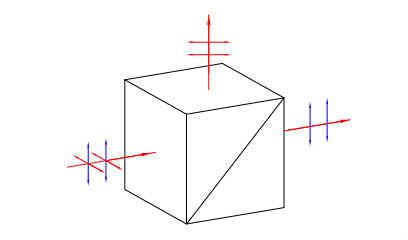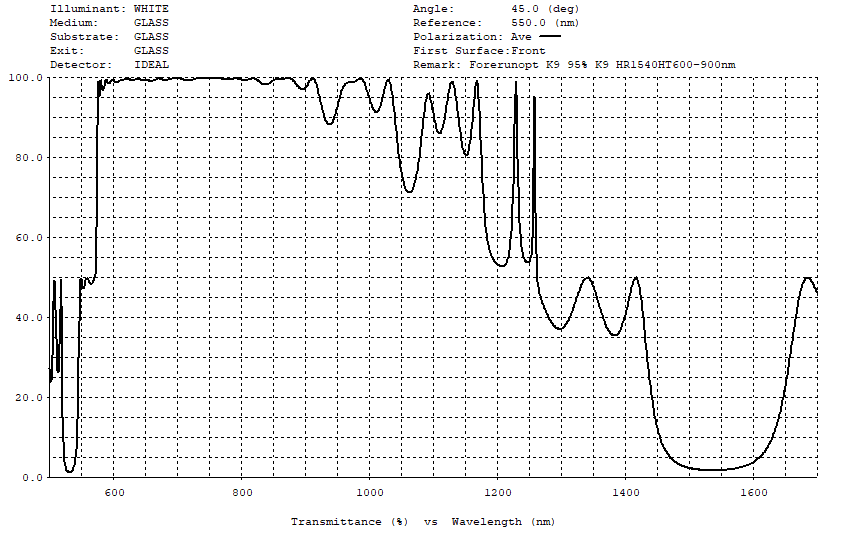The beam splitter is composed of two precisely aligned right-angle prisms bonded together, featuring a specific interference coating. This structure minimizes wavefront distortion, ensuring high-quality optical performance.
High Reflectivity and Transmission Control: A beam splitter cube is a medium that partially reflects and partially transmits light, typically controlled by coatings to achieve the optimal interference effect. This design allows photons to scatter with a certain amplitude while also transmitting directly with a certain amplitude, thereby achieving beam splitting.
Minimal Wavefront Distortion: The cube beam splitter is composed of a pair of precisely aligned right-angle prisms that are carefully bonded together to minimize wavefront distortion. This design ensures that the beam maintains high quality during transmission.
Multiple Application Scenarios: Beam splitter cubes are widely used in various scientific and engineering fields, including quantum optics, optical instruments, and optical communications. They can split a beam into two paths for applications such as interferometry and spectral analysis.
Compatibility with Mounts and Adjustment Frames: Cube beam splitter mounts are designed to install 0.5-inch or 1-inch cube beam splitters into optical adjustment frames, ensuring that the transmitted beam can pass through the aperture, facilitating use in various optical systems.
With these features, the beam splitter cube has become an indispensable component in the field of optics, providing crucial support for scientific research and technological applications.

Specifications | Commercial spec. | High precision spec. |
Material | UV glass (Quartz, Fused silica) VIS glass (Schott, CDGM, HOYA, etc.) IR material: (Sapphire, ZnSe, Silicon, etc.) Special material: (SiC) | |
Dimension | 5mm~100mm | |
Dimension tolerance | ±0.1mm | ±0.05mm |
Surface quality | 60/40 | 40/20 |
Surface flatness | 1/4λ | 1/10λ |
Clear aperture | >85% of dim | >90% of dim |
90°Deviation tolerance | 3 arc min | 5 arc sec. |
Bevel | <0.2mm x 45deg | <0.1mm x 45deg |
Coating | Up on clients’ request | |

Type No. | Dimension (mm) | Tolerance of roof angle | Material | |
A | B | |||
RP-18-24.5-5 | 18 | 24.5 | ±5 arc sec. | BK7 / Fused silica |
RP-18-24.5-15 | 18 | 24.5 | ±15 arc sec. | BK7 / Fused silica |
RP-32-41-5 | 32 | 41 | ±5 arc sec. | BK7 / Fused silica |
RP-32-41-15 | 32 | 41 | ±15 arc sec. | BK7 / Fused silica |
High-Power Laser Beam Quality Analysis: A beam splitter cube can divide a high-power laser beam into two parts for the evaluation and analysis of beam quality. This division helps assess key parameters such as the stability, uniformity, and directionality of the laser beam.
Beam Diagnostics: The laser beam split by the beam splitter cube can be used for various beam diagnostic techniques, such as wavefront analysis and coherence measurement, allowing for a comprehensive evaluation and optimization of the laser system’s performance.
Optical Experiments and Research: In the field of optical experiments and research, beam splitter cubes are widely used in interferometers, beam combining, and splitting experiments. They help researchers better understand and control the behavior of light.
The working principle of a beam splitter cube is based on the partial reflection and partial transmission properties of light. It is typically composed of two BK7 glass prisms, with a beam-splitting coating applied to the prism surfaces. This coating allows the incident light to be divided into reflected and transmitted parts according to a specific ratio. This design enables a portion of the light beam to be reflected while the other portion is transmitted, thereby achieving beam splitting.
With these features, the beam splitter cube has become an essential component in the field of optics, providing crucial support for scientific research and technological applications.
